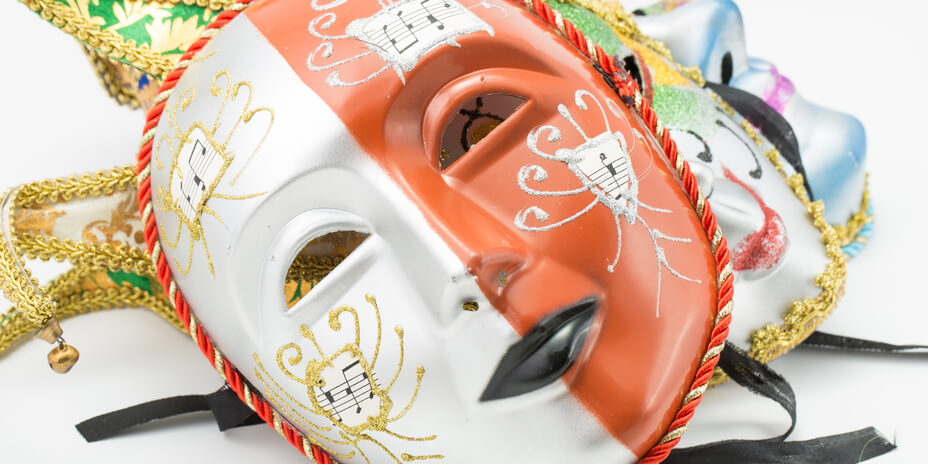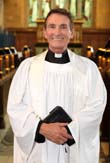
Before each of us begins our incarnational cycle on the planet, we choose one of seven Roles which serve as the blueprint for who we are, what special abilities we possess, and how we interact with others.
Our role is the type of soul we are, our special soul type, the spiritual archetype we embody. Every soul has a particular role that determines his dominant way of being. Although a soul can have only one role, there are secondary role influences from his essence twin and casting (mathematical position within the greater whole). We could say that our role is our primary style—it determines not so much what we do but how we tend to do whatever we choose to do. Anyone can do any activity, regardless of role, although each role tends to gravitate toward certain activities. For example, since sages are the cardinal expression role, they often like to disseminate information. However, a person should not assume that he is a sage just because he likes to do that—people of other roles may also have that characteristic. A role is not an exclusive, rigid set of behaviors.
The Seven Roles

Before each of us begins our incarnational cycle on the planet, we choose one of seven Roles which serve as the blueprint for who we are, what special abilities we possess, and how we interact with others. Before each of us begins our incarnational cycle on the planet, we choose one of seven Roles which serve as the blueprint for who we are, what special abilities we possess, and how we interact with others.
Server (Seeks to serve the common good)
 Servers alleviate suffering. Wants to solve the world's problems in a material, physical sense. Bears up the burdens of mankind. Has a strong tendency toward domestic living — in the home and family. Not too proud to ask for help.
Servers alleviate suffering. Wants to solve the world's problems in a material, physical sense. Bears up the burdens of mankind. Has a strong tendency toward domestic living — in the home and family. Not too proud to ask for help.
They seek the well-being of all. Doctor, nurse, social worker, bureaucrat, waiter, waitress, housewife.
Famous Servers: Ingrid Bergman, Carol Mosely Braun, Pearl Buck, Doris Day, Sally Field, Martin Freeman, Al Gore, Juanita Gregg, Alfred Hitchcock, Caroline Kennedy, John Kerry, Dalai Lama, Ray Liotta, Elizabeth ll, William Macy, Greg Marcks, Paul McCartney, Mitch McConnell, Vladimir Putin, Eleanor Roosevelt, Susan Sarandon, Wesley Snipes, John Steinbeck, Kristen Stewart, James Stewart
Read more about the Server.Artisan (Seeks creativity and the structure behind it)
 Original and creative in thinking, artistic expression, and engineering. More artisans in the fine arts than any other role. Uses his hands to produce objects for use by mankind. Manipulates the objective world of things or symbols of things. The physical world is material to be used, molded, and fashioned. Artist, inventor, poet, writer, craftsman, actor, architect, engineer, mechanic, repairman, athlete.
Original and creative in thinking, artistic expression, and engineering. More artisans in the fine arts than any other role. Uses his hands to produce objects for use by mankind. Manipulates the objective world of things or symbols of things. The physical world is material to be used, molded, and fashioned. Artist, inventor, poet, writer, craftsman, actor, architect, engineer, mechanic, repairman, athlete.
Famous Artisans: Woody Allen, David Bowie, Matthew Broderick, Emily Blunt, Hillary Clinton, Princess Diana, Leonardo DiCaprio, Clint Eastwood, Jimmy Fallon, Lady Gaga, Rupert Grint, Audrey Hepburn, Scarlett Johansson, Grace Kelly, Alanis Morissette, Brad Pitt, Natalie Portman, Robert Redford, Christina Ricci, Winona Ryder, Frank Sinatra, Meryl Streep, Audrey Tautou, Denzel Washington, Kate Winslet
Read more about the Artisan.Warrior (Seeks a challenge)
 Is achievement and accomplishment oriented. Responds well to reward and punishment behavior incentives. Sees what is undone and does it. Good at implementing the directives of others. Likes to explore. Often athletic by nature. Businessman, salesman, laborer, policeman, soldier, bouncer, boxer, athlete, truck driver.
Is achievement and accomplishment oriented. Responds well to reward and punishment behavior incentives. Sees what is undone and does it. Good at implementing the directives of others. Likes to explore. Often athletic by nature. Businessman, salesman, laborer, policeman, soldier, bouncer, boxer, athlete, truck driver.
Famous Warriors: Jessica Alba, Angela Bassett, Bono, Marlin Brando, Justin Chambers, Andrew Dice Clay, Judi Dench, Kat Dennings, Johnny Depp, Laurence Fishburne, Carrie Fisher, Jane Fonda, Harrison Ford, Kasie Hunt, Jessica Lange, Lea Michele, Paul Newman, Rosie O'Donnell, Sean Penn, Amy Schumer, Barbra Streisand, Oliver Stone, Kathleen Turner, Mario Van Peebles, Sigourney Weaver.
Read more about the Warrior.Scholar (Seeks knowledge)
 Often sees life as an experiment. Views the world primarily in terms of its information content. Life is seen as a classroom and the Scholar is the star pupil. Everything is just so much data to be gathered and sifted. The world is a laboratory to experiment in. The physical appearance is often androgynous or neutral. Scientist, scholar, writer, researcher, mathematician, professor.
Often sees life as an experiment. Views the world primarily in terms of its information content. Life is seen as a classroom and the Scholar is the star pupil. Everything is just so much data to be gathered and sifted. The world is a laboratory to experiment in. The physical appearance is often androgynous or neutral. Scientist, scholar, writer, researcher, mathematician, professor.
Famous Scholars: Ben Affleck, Beethoven, Humphrey Bogart, Jeff Bridges, Sandra Bullock, Helena Bonham Carter, Deepak Chopra, Matt Dillon, Emily Dickinson, Robert Downey Jr., Albert Einstein, Linda Hamilton, Daryl Hannah, Salma Hayek, Holly Hunter, Jennifer Lawrence, Jennifer Jason Leigh, Abraham Lincoln, Daniel Radcliffe, Fred Rogers, William Shakespeare, Jon Stewart, Emma Thompson, Eckhart Tolle, John Wayne
Read more about the scholar.Sage (Seeks communication in all things)
 The great communicator. Able to express the higher mental faculties of wisdom, beauty, love, harmony, and philosophy. This is the story-doer type, who likes to act out and dramatize his thoughts through art, music, teaching, salesmanship, or entertainment. He enjoys playing to an audience. Entertainer, performer, actor, public speaker, teacher, broadcaster.
The great communicator. Able to express the higher mental faculties of wisdom, beauty, love, harmony, and philosophy. This is the story-doer type, who likes to act out and dramatize his thoughts through art, music, teaching, salesmanship, or entertainment. He enjoys playing to an audience. Entertainer, performer, actor, public speaker, teacher, broadcaster.
Famous Sages: Jennifer Aniston, Jack Black, Jim Carrey, Kristin Chenoweth, George Clooney, Bradley Cooper, Kevin Costner, Tom Cruise, Robert DeNiro, Tina Fey, Whoopi Goldberg, Tom Hanks, Dustin Hoffman, Samuel Jackson, Angelina Jolie, Catherine Zeta Jones, Keira Knightley, Madonna, Bill Mauer, Michael Moore, Bill Murray, Amy Poehler, Julia Roberts, J.K. Rowling, Oprah Winfrey.
Read more about the sage.
Priest (Seeks to serve the higher good)
 Sees the potential of people and is good at eliciting it. Is equipped to bring out the hidden qualities of goodness in others. A leader of mankind in inspiring others to noble virtues. Has "a heart of gold." Feels the urge to raise the consciousness of others. Pastor, minister, preacher, counselor, psychologist.
Sees the potential of people and is good at eliciting it. Is equipped to bring out the hidden qualities of goodness in others. A leader of mankind in inspiring others to noble virtues. Has "a heart of gold." Feels the urge to raise the consciousness of others. Pastor, minister, preacher, counselor, psychologist.
Famous Priests: Amy Adams, Julie Andrews, Ellen Burstyn, Jessica Chastain, Jennifer Connelly, Anderson Cooper, Benedict Cumberbatch, Patrick Dempsey, Laura Dern, Megan Fox, Gandhi, Richard Gere, Cary Grant, Anne Hathaway, Jennifer Hewett, Hugh Jackman, John Lennon, James Mason, James McAvoy, Barack Obama, Daisy Ridley, Bernie Sanders, Christopher Walken, Emma Watson, Naomi Watts.
Read more about the priest.King (Seeks to lead, mandate)
 A born leader, foresees what needs to be done, and sets forces in motion to accomplish it. Concerned with initiating political or governmental action in the arena of events. Often impressive or charismatic in appearance — regal bearing. All of the other Roles tend to defer to a King. Mayor, politician, statesman, governor, manager, overseer, steward, president, executive.
A born leader, foresees what needs to be done, and sets forces in motion to accomplish it. Concerned with initiating political or governmental action in the arena of events. Often impressive or charismatic in appearance — regal bearing. All of the other Roles tend to defer to a King. Mayor, politician, statesman, governor, manager, overseer, steward, president, executive.
Famous Kings: Christian Bale, Bela Bartok, Cate Blanchett, Yul Brynner, James Cameron, Sean Connery, Joan Crawford, Bette Davis, James Garner, Ryan Gosling. Katherine Hepburn, Steve Jobs, Tommy Lee Jones, Milla Jovovich, Klhoe Kardashian, JFK, Lucy Lawless, Jennifer Lopez, Berenice Marlohe, Anthony Robbins, Keri Russell, Patrick Stewart, Sharon Stone, Igor Stravinsky, Mark Walberg.
Read more about the king.

Distribution of Roles (or Soul Types)
According to Yarbro, roughly twenty-five percent of the earth’s population (and the sentient population of the entire cosmos) are Servers, twenty-two percent are Artisans, seventeen percent are Warriors, fourteen percent are Scholars, ten percent are Sages, eight percent are Priests, and four percent are Kings.
This follows the order of most ordinal to most cardinal, with the neutral role, scholar, comprising about one-seventh of the population. So about sixty-four percent of the population has an ordinal role, and twenty-two percent has a cardinal role, with, again, fourteen percent having the neutral role, scholar. On any planet, there may be historical periods during which these percentages vary.

The Four Axes (or Universal Qualities)
On the chart at the top of the page, the roles are classified as being on one of four axes, or dominant universal qualities: Inspiration, Expression, Action, and Assimilation (or neutral).
Servers and Priests are Inspirational roles (the inspiration axis relates to the inner world);
Artisans and Sages are Expressive roles (the expression axis relates to bringing the inner world into the outer);
Warriors and Kings are Action roles (the action axis relates to doing in the outer world), and
Scholars are the Assimilative role (the assimilation axis is neutral; it provides objectivity and a resource for the other axes).
The axes are fairly self-explanatory: a role or overleaf on the inspiration axis, for example, has an inspirational quality; in other words, it has to do with the inner world. (A definition of inspiration is "the act of drawing in.") The expression axis has to do with manifesting the inner world -- for example, communication; it is the bridge between inspiration and action. The action axis relates to the outer world, or doing. The assimilation axis is objective and neutral. It provides a resource for the other axes and helps integrate them.
Since the role is a person's primary way of being, we know that the primary way of being for Servers and Priests, the inspiration axis roles, is inspiration. They need to feel inspired and feel that they are inspiring others in order to feel that they are being themselves. They may also need to express themselves, act, and assimilate, but these impulses are not as important for them. Likewise, Warriors and Kings, the action axis roles, languish if they are not in a position to take tangible action. For Scholars, having information to assimilate is as fundamental as having food to eat. And Artisans and Sages suffer if they do not have an opportunity to express themselves.
Cardinal or Ordinal
The ordinal roles -- Server, Artisan, and Warrior -- relate to the smaller picture. They're narrowly focused and favor one-on-one interactions with others. The ordinal side of an axis can be compared to a camera's zoom lens; it deals with the specific, concrete and immediate. The ordinal is contracted, and oriented toward detail.
The cardinal roles -- Sage, Priest, and King -- relate to the larger picture. They're broadly focused and favor larger groups or the masses. The cardinal side is like a wide-angle lens; it deals with the general, abstract, and far-reaching. The cardinal is expanded, broad, and encompassing.
The Scholar role is neutral (neither cardinal nor ordinal).
To short, the roles go from most ordinal to most cardinal in this order:

Roles & Inputs
Inputs are psychic receivers used by the roles. Scholars, Kings, and Warriors—the “solid” roles—have one input. Michael has said that inputs are like modular slots into which various kinds of perceptions can be plugged. One input is usually concerned with current reality, the more-or-less concrete, objective facts of circumstance. The three roles with just one input focus there, making them more solid, practical types.
Priests and Servers each have two inputs. For the priest, adding another "slot" that they can use for holding a perception of the higher good allows them both to be visionary and to bring their vision into practice. It is similar with servers, except their vision is "wide" rather than "tall," a vision of what would be good for the whole on a practical, earth-plane level.
Sages have three inputs. In Yarbro, Michael talks about how the three sage inputs makes performing energizing, whereas it can be enervating for, say, warriors. Sage actors on stage can pay attention to the audience, the other actors, and their lines at the same time. In other circumstances, they could use their inputs for other things.
Finally, Artisans have five inputs. An artisan creating a piece of art may be simultaneously aware of many different ideas he/she wants to put into it, making it easier to weave them together seamlessly, than, say, for a king artist, who has to go back and forth among those ideas. Scholar artists can create complex, detailed art with a lot of concepts in it, but that's different. Artisan art tends to be more surprising and inventive, maybe more right-brained, with more layers that the artist may not even be aware of; scholar art tends to be more calculated. Five inputs make it easier to make the kinds of connections between disparate elements that we also make in the dream state; artisans tend to daydream a lot and in general be thought of as dreamers.
Learn more about the inputs.
No Hierarchy of Roles
It is not better to be one role than another. Some people think that it’s better to be a king than a server. From the point of view of our spark, if we had wanted to be a king, we would be one. The roles describe various styles or ways of being; they are not measures of importance.
Role Photos

To learn even more about roles, visit our role photos page where you can see what the roles look like. Also, discover the roles of celebrities.
What Role Are You?
Getting curious about your role? Take our role test and learn more about yourself and the special spiritual archetype you embody.
Articles: The Seven Roles

What's Your Role? An Introduction to the Michael teachings
A brief, lighthearted introduction to the teachings.
A brief, lighthearted introduction to the teachings.
The Roles
A comprehensive collection of articles (including photos) on the seven personality types used in the Michael system.
A comprehensive collection of articles (including photos) on the seven personality types used in the Michael system.
Role Photos
Study the photos of various role and overleaf combinations.
Study the photos of various role and overleaf combinations.
Celebrity Roles & Overleaves
Discover the roles of celebrities.
Discover the roles of celebrities.
Role Personality Test
Take the test and learn what role you are.
Take the test and learn what role you are.
Relationships and Roles
Examines the compatibility between various roles.
Examines the compatibility between various roles.
Roles As Energy
Our role is our dominant energy, but we have all the others in us as well, at least potentially.
Our role is our dominant energy, but we have all the others in us as well, at least potentially.
How Roles Appear Physically and Energetically
Learn how the roles exert an influence on the qualities that come through physical traits, especially facial expressions.
Learn how the roles exert an influence on the qualities that come through physical traits, especially facial expressions.
Inputs
Learn about the psychic receivers, or inputs that each role uses.
Learn about the psychic receivers, or inputs that each role uses.
Transcending Positive and Negative Poles
As related to roles.
As related to roles.